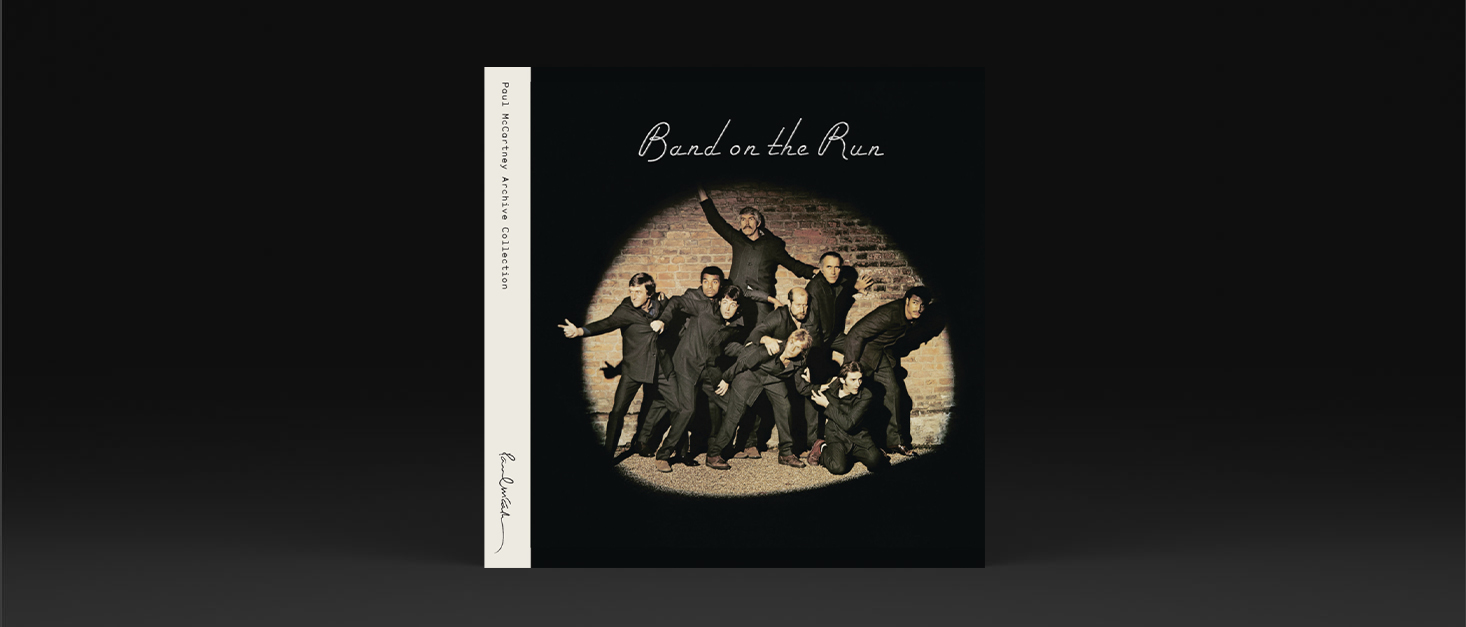
Revisiting Paul McCartney, Wings' - Band on the Run
In the latest in a regular column reflecting on influential albums from decades past, we look back at the creation, sound and impact of Wings' 1973 smash hit, Band on the Run
Tags: Music,Released in December 1973, the making of Wings' fifth studio album started with Paul McCartney's desire to do something "different and adventurous". After looking up a list of EMI Studios, McCartney found one in Lagos, and decided something interesting "was bound to happen" if the album was recorded there. His decision to travel to Nigeria set off an unexpected chain of events that had a profound impact on McCartney's future career.
After leaving The Beatles in 1970, McCartney had seemingly struggled to carve out a niche for himself. He'd married photographer Linda Eastman, and bought a Scottish island where he intended to raise his children. In 1971, he and Linda formed a new band, Wings, with lead guitarist Henry McCullock, drummer Denny Seiwell and former Moody Blues guitarist Denny Laine.
By 1973, McCartney had released two solo albums, and another two with Wings, but none had garnered the critical acclaim of his earlier work with the Fab Four. (To make matters worse, his former collaborator John Lennon had released Imagine to huge acclaim.)
Things began to look up, however, with Wings' album Red Rose Speedway. Although no masterpiece, it hinted at a possible return to form for McCartney, with catchy single My Love (as good as many album tracks from The Beatles' later years) making a chart appearance. Yet Wings needed focus. The decision to record the next album in Nigeria certainly brought that, albeit not in the way that McCartney expected.
The night before the band were set to depart, McCartney received a call to say that Henry McCullough and Denny Seiwell wouldn't be coming. The original line up of Wings had split. "I wasn't cool about it," he later recalled. "The good thing is that it made me think 'screw you, I am going to make an album that you wish you were on!'"
Once there, the remaining members of the group encountered some major challenges. Paul and Linda were robbed at knifepoint during their stay, losing a notebook full of lyrics and songs, plus cassette tapes of demos Paul wanted to record in the studio. Paul also had what was later diagnosed as a bronchial spasm, causing him to faint. The studio itself didn't quite live up to expectations, and was a far cry from EMI's Abbey Road Studios - where Paul had laid down almost everything he'd ever worked on. “It was pretty rough and ready, even the sound booths weren’t built”, he once said of the space.
The loss of the band's lead guitar player and drummer presented another challenge, with Paul having to step into their roles. "I’m an okay drummer, so I knew if I kept it simple, I’d be able to cover it.”, he later recalled. While this brought some serious added pressure, he duly rose to the challenge. "Most of what we were doing was not exactly Tchaikovsky, it was pretty much three or four chords", he once quipped.
The dramatic line-up change also provided a daunting but ultimately inspiring challenge for Linda: "I had to worry more about learning to play piano and keyboards, but I got so much pleasure out of it”, she later said. Her greatest musical contribution to the record, however, was singing harmonies.
Aside from its lack of vocal booths, the Lagos studio had a faulty mixing desk driving a single Studer 8-track open reel tape recorder. While this was high tech stuff compared to the 4-track that Sergeant Pepper’s Lonely Hearts Club Band had been recorded on back in 1967, by 1973 it was pretty mediocre. Somehow though, this didn’t seem to matter, and the unfamiliar location provided some much-needed stimulation for the band.
"I think if we’d have stayed in London and gone to our normal studio, it might have been an okay album, a good album, but the fact that we were in a strange place, with strange things happening, there was now only three of us instead of five, we had to work round all these circumstances and incorporate all this into the album," Paul later recalled. "Suddenly we were forced to, we had no choice."
The McCartneys and Denny Laine came back to London in October 1973, and duly began polishing the album's songs. This was done at George Martin’s AIR studios, where many of the 8-track recordings were transferred to a 16-track machine, adding more vocal harmonies and lavish orchestral arrangements courtesy of a 60-piece orchestra (the latter done by Tony Visconti).
Whilst the basic sound of the Lagos work was retained, it was garnished to give a more polished sound. Although you’d never call Band on the Run an audiophile album, it wasn’t bad by the standards of the day – showing the quality of the basic 8-track recorder and George Martin’s excellent post-production work. “When we got back to England, and played the tapes, and they sounded different – then we set about doing overdubs, and it started to get raw but professional, which was kind of a nice mix”, McCartney explained.
Band on the Run isn’t so much a concept album, as much as one with a common thread running through it – that of freedom. The iconic front cover photo, taken by Clive Arrowsmith, is a stylistic nod to Sergeant Pepper, but some have argued that the underlying idea of the title track was McCartney’s legal battles with a former Beatles business manager. By 1973, the three other former band members had become embroiled. In later interviews, Paul was more abstract in explaining the theme: "For me, round about that time, there was a spirit amongst the young people of getting away, breaking out… and I think that was me doing a nod to that kind of thing. It was imaginary, not really based on anything I actually knew..."
The album kicks off with the superb title track, then moves to Jet (named after a pony on the McCartneys’ Scottish farm), and the beautiful, Beatle-esque ballad Bluebird. From then on, it rolls through an eclectic mix of catchy tunes including the singalong Picasso's Last Words (Drink to Me). The latter was written a few months before Lagos, after McCartney bumped into Steve McQueen and Dustin Hoffman while on holiday in Jamaica. Hoffman (who was there with McQueen to film Papillon) had asked McCartney to make a song up on his guitar, and the track ended up being recorded at former Cream member Ginger Baker's nearby ARC studio. (Baker famously contributed a percussive tin of gravel to the track's rhythm section.)
Unsurprisingly, Band on the Run is far from the best sounding album of its time. It has a soft texture and lacks definition in both bass and treble. Yet it can work better than the original CD version, which is dynamically compressed and devoid of the sweet tonal patina that the original LP version had. The album was quick to go to hi-res, and at 24-bit/192kHz, it really shines. A serious digital front end will properly define the beautiful timbre of the guitar work, sweet harmonies and McCartney’s lush vocal tones - a lesser one renders it flat and two-dimensional. It’s one of those albums that’s disproportionately more satisfying to listen to in hi-res; the granular detail that’s delivered, including the immersive soundstage, taking the listener right to the recording studio.
The album’s stellar success defined the sound of 1974, and blared out of transistor radios and record players everywhere. It resulted in a huge US tour in 1976, which catapulted Wings to global superstardom (the second time around for the group's founder). In a later interview, McCartney recalled: "The album was important for me because it was really the first time we had a big hit… It introduced the band to a new generation of people. So finally we made it, and finally went on tour in America – and it was really the start of Wings’ success." As McCartney has since pointed out, it offered a strong riposte to those who suggested his time in the spotlight was over.














